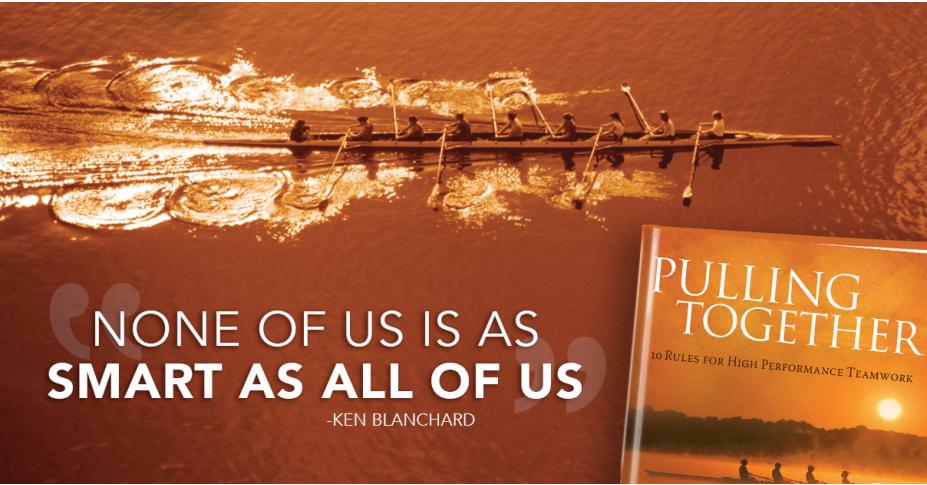What sets a successful organization apart from its competitors? You can bet having a successful team is at the foundation of the answer.
- Are you putting your team first?
- Do your team members really understand your overall vision?
- Do team members know what is expected of them?
- How can each team member contribute most effectively?
- What constants hold the team together?
Read on for an excerpt from John J. Murphy's Pulling Together that will help you answer these questions and give you the tools you need for success.
An excerpt from
Pulling Together
by John J. Murphy
At the center of every high performance team is a common purpose—a mission that rises above and beyond each of the individual team members. To be successful, the team's interests and needs come first. This requires "we-opic" vision ("What's in it for we?"), a challenging step up from the common "me-opic" mindset.
Effective team players understand that personal issues and personality differences are secondary to team demands. This does not mean abandoning who you are or giving up your individuality. On the contrary, it means sharing your unique strengths and differences to move the team forward. It is this "we-opic" focus and vision—this cooperation of collective capability—that empowers a team and generates synergy.
Cooperation means working together for mutual gain—sharing responsibility for success and failure and covering for one another on a moment's notice. It does not mean competing with one another at the team's expense, withholding important data or information to "one up" your peers, or submitting to groupthink by going along so as not to make waves. These are rule breakers that are direct contradictions to the team-first mindset.
High performance teams recognize that it takes a joint effort to synergize, generating power above and beyond the collected individuals. It is with this spirit of cooperation that effective teams learn to capitalize on individual strengths and offset individual weaknesses, using diversity as an advantage.
Effective teams also understand the importance of establishing cooperative systems, structures, incentives and rewards. We get what we inspect, not what we expect. Think about it. Do you have team job descriptions, team performance reviews and team reward systems? Do you recognize people by pitting them against standards of excellence, or one another? What are you doing to cultivate a team-first, cooperative environment in this competitive, "me-opic" world?
To embrace the team-first rule, make sure your team purpose and priorities are clear. What is your overall mission? What is your game plan? What is expected of each team member? How can each member contribute most effectively? What constants will hold the team together?
Then stop and ask yourself, are you putting the team first?
Pulling Together captures the essence of teamwork, breaking down this complex topic into 10 rules anyone can understand. To help your team get the most out of this book and the great insights it offers, check out this free downloadable discussion guide. Your chances of pulling together will be greatly improved!

